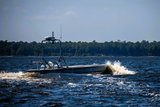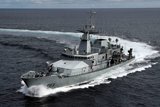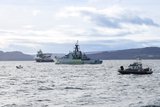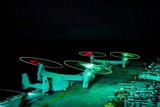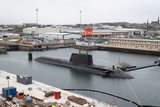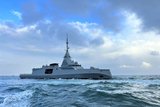Austal USA details LAW design approach
Rendering of Austal USA's Light Amphibious Warship (LAW) design. (Photo: Austal USA.)
Austal USA VP for business development and external affairs, Larry Ryder, has told Shephard the company is focusing on speed, endurance, payload and the beaching capability as it refines its design for the USMC Light Amphibious Warship (LAW) programme.
Last month, the company showed a model of its design for the LAW programme at the Navy League Sea Air Space event, which Ryder said received a positive response from visiting delegations.
Despite showing the model, Ryder said the companies design was flexible and could be adapted to reflect whatever programme requirements the USN and USMC settle on.
The USN and
Already have an account? Log in
Want to keep reading this article?
More from Naval Warfare
-
![How the UK Royal Navy is powering up its hybrid fleet to combat new threats]()
How the UK Royal Navy is powering up its hybrid fleet to combat new threats
Since it announced its move towards a new “hybrid navy” earlier this year, the force has announced a number of new uncrewed technologies in the works.
-
![US and UK to begin Trident II D5 Increment 8 in October 2026]()
US and UK to begin Trident II D5 Increment 8 in October 2026
Trident II D5 Increment 8 will involve improvements to the shipboard navigation subsystem for the US Ohio and Columbia and the UK Dreadnought and Vanguard submarine classes.
-
![What capabilities has the US deployed in the Caribbean and South America to engage “drug boats”?]()
What capabilities has the US deployed in the Caribbean and South America to engage “drug boats”?
The US arsenal includes amphibious assault and littoral combat ships, cutters, destroyers, landing platform docks, a nuclear-powered fast attack submarine, drones, ISR aircraft, helicopters and fighters.
-
![HMS Agamemnon: details of the dive and what the Astute-class signifies for the UK Royal Navy]()
HMS Agamemnon: details of the dive and what the Astute-class signifies for the UK Royal Navy
As HMS Agamemnon moves closer towards joining the UK’s in-service submarine fleet, how does the sixth Astute-class fit into the Royal Navy’s defence strategy?
-
![French Navy frigates to align with Hellenic Navy after Aster missile enhancement]()
French Navy frigates to align with Hellenic Navy after Aster missile enhancement
The FDI frigates will have an enhanced warfare capability that matches the configuration of ships ordered by Greece.








